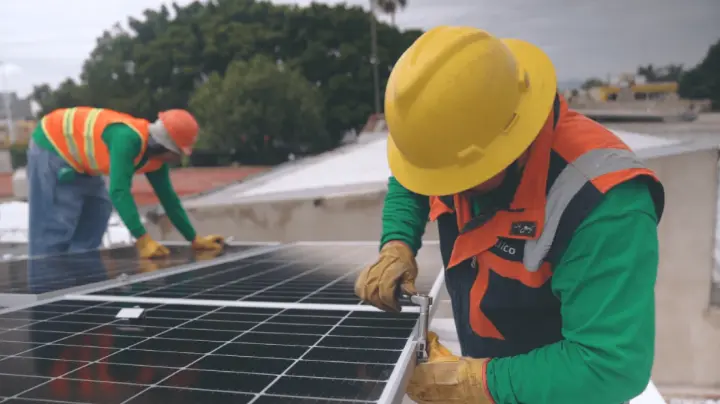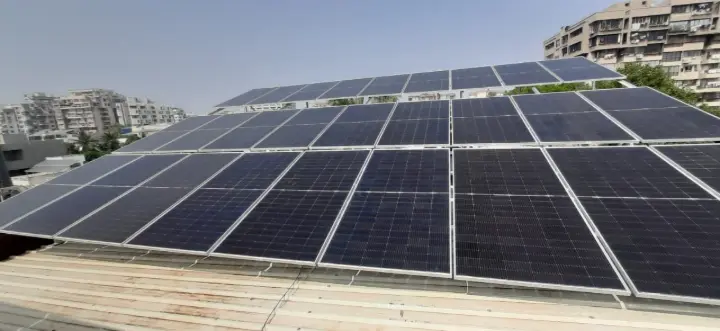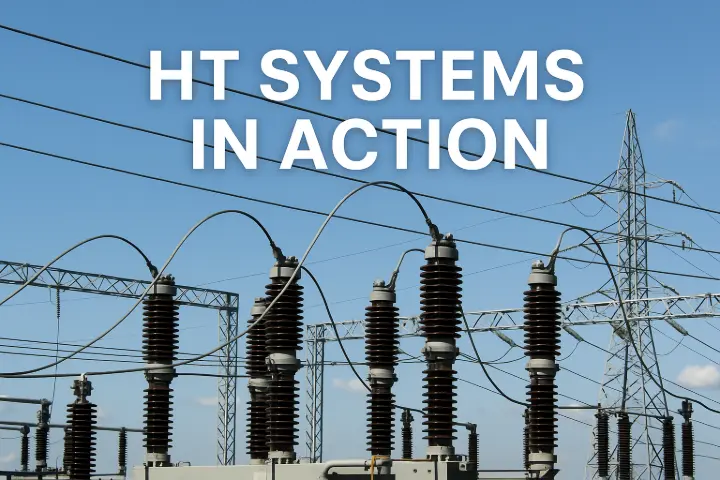Introduction
As the world continues to grapple with the environmental impacts of conventional energy sources, industries are increasingly turning to renewable energy solutions to power their operations. The integration of renewable energy sources, such as solar, wind, and geothermal energy, into industrial electrical systems is not just an environmentally conscious choice—it is becoming a necessity. With the global push toward sustainability, energy efficiency, and cost savings, the industrial sector has a key role to play in shaping the future of energy consumption. This article explores how renewable energy solutions can be successfully integrated into existing industrial electrical infrastructures, the benefits, challenges, and practical considerations involved.
The Growing Need for Renewable Energy in Industries
Industries, especially those with high energy consumption, face growing pressure to reduce their carbon footprints. The transition to renewable energy sources offers a promising solution for achieving both sustainability goals and cost reduction objectives. According to the International Energy Agency (IEA), industrial sectors account for nearly 40% of global energy use, with a significant portion derived from fossil fuels. By shifting toward renewable energy, industries can reduce their dependency on non-renewable resources and take steps toward carbon neutrality.
The industrial sector includes manufacturing plants, warehouses, data centers, and other facilities that require consistent and significant power. The adoption of renewable energy not only addresses the environmental concerns but can also result in long-term financial savings due to the decreasing cost of renewable energy technology, particularly solar and wind.
Key Renewable Energy Solutions for Industrial Systems
-
Solar Power (Photovoltaic Systems)
Solar energy is one of the most popular renewable energy sources due to its abundance and the decreasing cost of photovoltaic (PV) systems. Industries can install solar panels on rooftops, open land, or even integrate them into building designs to generate electricity. This renewable source is ideal for daytime operations and can be used to offset a significant portion of an industrial plant’s energy needs.- How it works: Solar panels capture sunlight and convert it into direct current (DC) electricity, which is then converted into alternating current (AC) by an inverter to be used by industrial equipment.
- Benefits: Solar energy systems require minimal maintenance, have a long lifespan (usually 25 years or more), and can significantly reduce electricity bills.
- Challenges: Energy production is weather-dependent, and solar power may not be sufficient to meet all of an industrial facility's energy demands without adequate energy storage solutions.
-
Wind Energy
Wind turbines are another powerful renewable energy source that can be utilized for industrial electricity needs. Wind energy is particularly effective for industries located in areas with high wind potential.- How it works: Wind turbines convert kinetic energy from the wind into mechanical energy, which is then converted into electricity. This energy can be directly integrated into the facility’s electrical grid or stored in batteries.
- Benefits: Wind energy is abundant and can generate electricity 24/7 when wind conditions are favorable, especially in regions with consistent wind speeds.
- Challenges: High initial costs, land space requirements, and potential disruptions to local wildlife can make wind energy a less viable solution for some industries. However, advancements in technology are steadily reducing costs.
-
Geothermal Energy
Geothermal energy harnesses heat from beneath the Earth's surface. While not as widely used in industrial sectors as solar or wind, geothermal energy can be an excellent source of power, particularly for facilities located near geothermal hotspots.- How it works: Geothermal power plants utilize heat from the Earth to generate steam, which powers turbines connected to generators. This can provide both electricity and heating for industrial processes.
- Benefits: Geothermal energy is consistent and reliable, offering baseload power generation that is not dependent on weather conditions.
- Challenges: The upfront cost of installation can be high, and geothermal resources are geographically limited, making it an impractical solution for some locations.
-
Biomass Energy
Biomass refers to organic materials, such as agricultural waste, wood, and even municipal waste, which can be used to generate electricity. In some industries, especially those in agricultural or forestry sectors, biomass can be a cost-effective and renewable energy source.- How it works: Biomass materials are burned or converted into gas, which is then used to produce electricity or heat.
- Benefits: Biomass is a versatile energy source that can be sourced locally and used to power industrial processes or even provide district heating systems.
- Challenges: Biomass requires a reliable feedstock supply and proper waste management. Additionally, there can be emissions during combustion, though they are still lower than fossil fuels.
Steps for Integrating Renewable Energy into Industrial Electrical Systems
-
Energy Assessment
The first step in integrating renewable energy is to conduct a comprehensive energy audit of the existing electrical infrastructure. This helps identify how much energy is being consumed, peak usage periods, and areas where efficiency improvements are possible. This assessment will also highlight opportunities for renewable energy integration. -
Infrastructure Upgrades
Industrial systems may need electrical upgrades to accommodate renewable energy. This could include adding inverters, energy storage solutions (like batteries), or enhancing grid infrastructure to handle intermittent energy supply. Upgrades might also involve incorporating smart grid technologies that can better manage the integration of renewable energy sources. -
Energy Storage Solutions
Since renewable energy sources like solar and wind are intermittent, integrating energy storage systems is crucial to ensure a continuous supply of power. Battery storage systems, such as lithium-ion batteries, allow excess energy produced during peak production hours to be stored for later use. Industrial facilities can use this stored energy during non-productive hours or when renewable sources are unavailable. -
Hybrid Systems
Hybrid systems, which combine multiple renewable energy sources (e.g., solar and wind), are becoming more common in industrial settings. A hybrid system can compensate for the intermittent nature of any single energy source, ensuring a stable and reliable energy supply. -
Grid Integration and Power Purchase Agreements (PPAs)
Some industries may choose to generate their renewable energy but still remain connected to the grid. In this case, the surplus energy can be sold back to the grid through power purchase agreements (PPAs). This not only helps offset operational costs but also contributes to the overall reduction of carbon emissions.
Benefits of Integrating Renewable Energy in Industrial Electrical Systems
- Cost Savings: Renewable energy systems have lower operating costs compared to traditional fossil fuels. Over time, the return on investment (ROI) is significant, especially as technology becomes more affordable.
- Energy Independence: By generating their own energy, industries can reduce reliance on external energy suppliers, ensuring greater control over energy costs and availability.
- Sustainability Goals: Adopting renewable energy demonstrates corporate responsibility and can improve an organization's environmental credentials, boosting its reputation with customers, investors, and regulators.
- Regulatory Compliance: Many governments are offering incentives for businesses to adopt clean energy solutions, and integrating renewables can help industries meet regulatory requirements for carbon emissions and sustainability.
Challenges and Considerations
While the benefits of integrating renewable energy into industrial systems are clear, there are challenges that industries must consider:
- High Initial Costs: The upfront cost of installing renewable energy systems can be substantial, particularly for technologies like wind and geothermal. However, these costs should be viewed as a long-term investment, with ROI occurring over several years.
- Intermittency and Reliability: Renewable energy sources like solar and wind are weather-dependent, which can create reliability concerns. This can be mitigated with energy storage systems and hybrid solutions.
- Space Requirements: Solar panels and wind turbines require significant space, which may not always be available at industrial sites. Careful planning and site assessment are essential.
Conclusion
Integrating renewable energy into industrial electrical systems is an essential step for industries aiming to reduce their carbon footprints, lower energy costs, and meet sustainability targets. While the process involves initial investments and overcoming technical challenges, the long-term benefits—ranging from cost savings to regulatory compliance—are undeniable. As technology continues to evolve, the potential for renewable energy solutions to transform the industrial energy landscape grows, marking a critical step towards a more sustainable and energy-efficient future.
By strategically adopting renewable energy, industries can not only meet their energy needs but also lead the charge in the global transition to a cleaner, more sustainable energy future.